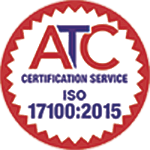The European market is vital for most companies selling medical products. These markets assess the quality of the products they buy by insisting that companies which market them have a ”CE” marking. This is important for all distributors, manufacturers and importers which trade on European markets. It is compulsory to have a CE marking on many non-food products which are listed in the CE Directive. This CE marking guarantees that the product complies with regulations set by the European Union (EU) and the European Economic Area or EEA.
Not all products are required to carry the CE marking but each regulation and directive clearly indicates which need to go through this process.
What Languages should be used for CE Marking?
There are no specific languages that are required in CE marking but at least they should be provided in the languages of the countries that demand this requirement. For example, France requires French while Belgium requires Dutch, French and German. Luxembourg requires German, French and Luxembourgish. It’s necessary to make contact with the assigned Competent Authority in each country to find out what are that country’s language requirements so that your business can meet the translation requirement
What countries demand CE Marking?
CE Marking is those countries which are members of the EU and EFTA (European Free Trade Association) countries which include Norway, Iceland and Liechtenstein. CE Marking is compulsory also for those products made outside countries that market and sell products in the European Economic Area (EEA). These are:
Austria
Belgium
Bulgaria
Croatia
Cyprus
Czech Republic
Denmark
Estonia
Finland
France
Germany
Greece
Hungary
Iceland
Ireland
Italy
Liechtenstein
Latvia
Lithuania
Luxembourg
Malta
Netherlands
Norway
Poland
Portugal
Romania
Slovakia
Slovenia
Spain
Sweden
Switzerland
Turkey
United Kingdom
CE marking is not required for Central European Free Trade Agreement (CEFTA) countries, but as some of them are pursuing EU membership, including Montenegro, Macedonia, and Serbia so they do adhere to many of the CE Marking standards.
What products, machines or devices need CE Marking?
CE Marking is a necessity for 22 products that have been required to follow directives. In general electrical products, machinery and medical products that could potentially be harmful if used incorrectly have CE Marking requirements. If you are marketing any of these products you should ensure the translation requirement is competently met.
What needs to be translated for CE Marking?
Importing countries that are required to follow CE Marking directives the translation requirement is to translate instructions for use, labelling, user manuals and packaging into the designated language(s). Usually, parts of documents and materials that are related to safety need to be translated.
Who is responsible for CE marking?
Usually, the manufacturer is delegated the responsibility for CE Marking and it’s important to know that whoever is delegated the responsibility for the translation requirement of the necessary documents, liability still lies with the original producer or manufacturer who affixes the CE Marking. The effects on translation should be minimised in order to ensure the CE marking is not affected.



